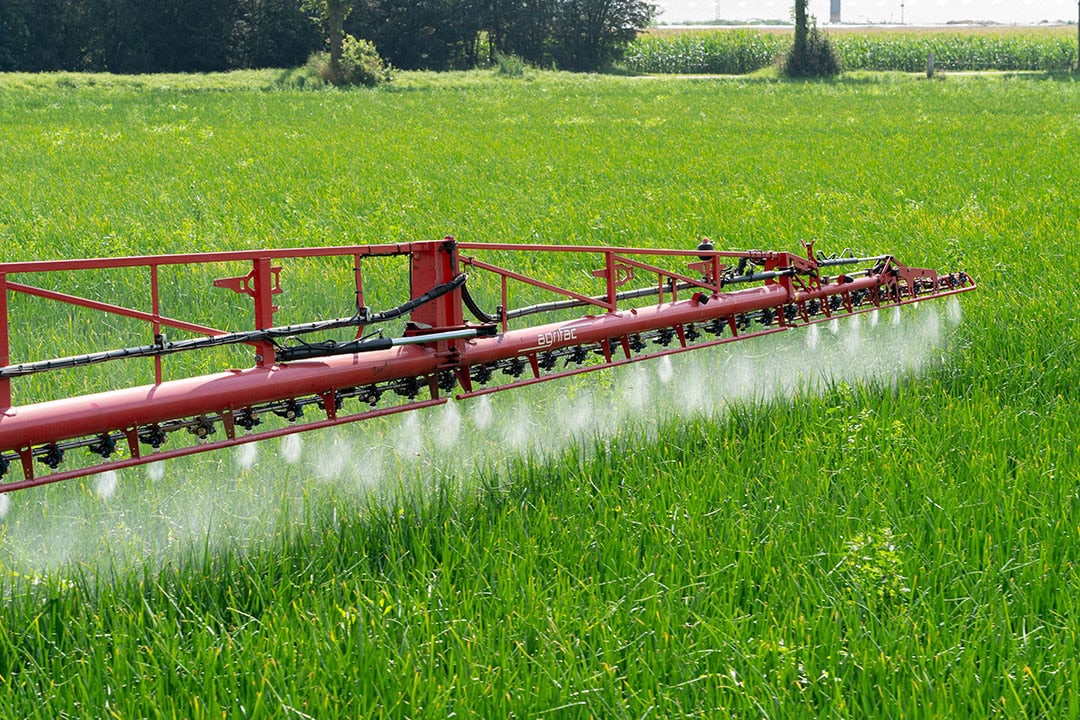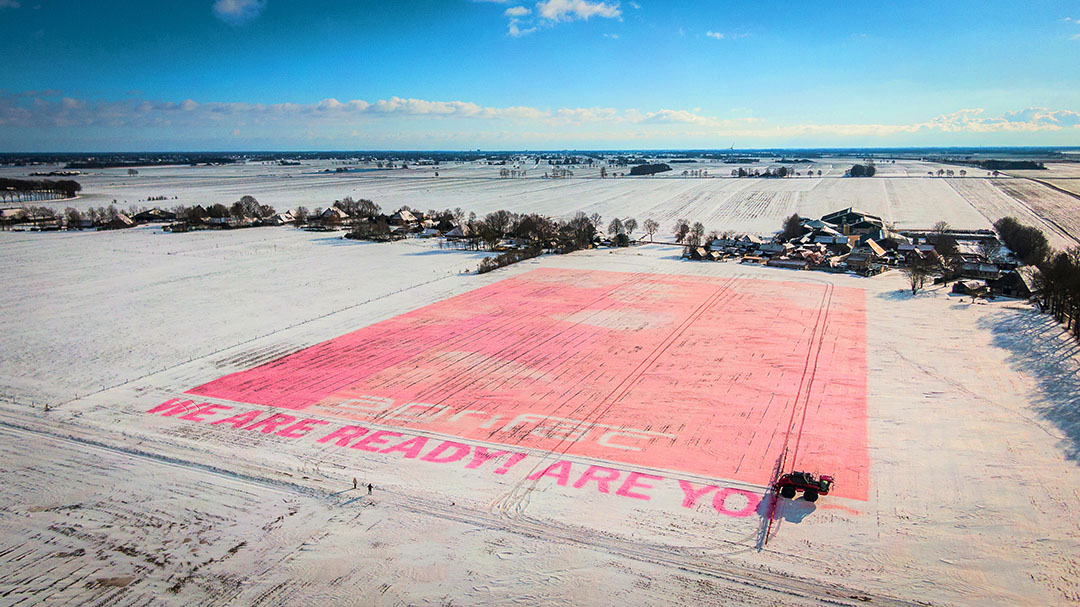How to VRA plant per plant with PWM-technology

While more and more new field sprayers are equipped with PWM-technology, farmers can’t optimally benefit from it for their VRA applications yet. Here’s why and what should change.
PWM, pulse width modulation in full, is a technology to regulate the power to a device by means of fast on/off pulses. The foundation for the technology was laid in the 1960’s. In 1992, Dr. Ken Giles of the University of California at Davis was the first to use it on agricultural sprayers and PWM spray nozzle control was first made commercially available by Capstan on Case IH sprayers in 1998. Nowadays, more and more new field sprayers leave factories equipped with PWM-technology. It is often used in combination with cameras or sensors for spot spraying.
Uphill and curve compensation
The technology is used to vary the percentage of time one or more spray nozzles are open/active and the percentage of time they are closed/inactive. The open/close sequence is happening multiple times per second with frequencies up to 100 Hz. Varying the open/close duration, enables sprayers to change the flowrate without a change in spray pressure (normally used to change the flowrate without using PWM technology). This means the droplet size is being maintained while changing the flowrate. Initially, PWM was used to compensate the flow while accelerating en decelerating and driving up and downhill. By changing the flowrate (l/min), PWM maintains the dosing rate (l/ha). The same type of flowrate compensation is used to ensure an equal dosing rate per nozzle while spraying curves and corners. On outside nozzles, the flow rate is increased (to prevent for underdosing) while on inside (centre) nozzles, the flow rate is minimised (to prevent for overdosing).
While there is an increasing number of nozzles available for PWM applications, air induction nozzles are not suitable for it. Choosing the right type of nozzle(s) depends among others on the application, the required spray drift reduction and whether or not you use spot spraying technology. There’s various online advices and sources to help choose the right type and size of nozzles such as Aussie Nozzle Guy and Sprayers 101.
Text continues below picture

Various setups
PWM-systems are typically developed and supplied by mostly well-known specialist manufacturers such as Capstan, Raven, Teejet and since recently also startup BBLeap. WEED-IT supposedly is also developing a standalone PWM-system. They all supply their systems to a wide range of sprayer manufacturers. Horsch for instance, is mounting Raven PWM-technology capable of VRA on 13 sections. Teejet’s DynaJet technology typically controls four nozzles as a section using a frequency of 20 Hz. WEED-IT claims that PWM-systems in practice use frequencies between 10 and 50 Hz while 20 Hz is the most commonly used frequency. Some systems can even go up to frequencies of 100 Hz. Alike maximum horsepower and maximum driving speeds, that doesn’t mean that you need that maximum frequency nor that it is always used in practice. The higher the frequency, and the more PWM-controlled nozzles, the more electrical power is needed to operate them. Sprayer manufacturers fitting their inhouse developed or adapted PWM-systems include Agrifac (StrictSprayPlus) and John Deere (ExactApply).
Text continues below picture

Single nozzle shut off as standard
While not every sprayer equipped with PWM is capable of varying the dosing rate per nozzle, it always allows for single nozzle shut off. Similarly to electrical or pneumatic single nozzle shut off. An argument of PWM over the other systems is that a single PWM-controlled nozzle allows for a wide array of dosing rates without affecting the droplet size.
VRA in the driving direction is also a standard feature. Single nozzle VRA within the width of the spray boom is theoretically also possible enabling pavement tile size (25×25 cm) pixels. While this also opens up the possibility to not only spot spray but to also use application maps with 25 cm grid sizes, currently only Agrifac and BBLeap are able to deliver the latter option. This is due to the huge numbers of data and the high communication speeds associated with it. A quick math: a 39-metre-wide spray boom with nozzles 25 cm apart results in 156 nozzles (and sections). If these are to vary the application rate per 25×25 cm pixel driving at (just) 2 m/sec (7.2 km/h), each second 1,248 actions are required to enable that. This currently proves to be way too high for existing Isobus communication protocols. The power supply of Isobus, 60 amperes maximum, also proves to be insufficient. The answer, high-speed Isobus, is currently being developed but will not become available within the next couple of years.
Text continues below picture

Options to do single nozzle VRA
For single nozzle VRA, farmers for now depend on proprietary solutions such as Fendt One. Dutch precision farming forerunner Jacob van den Borne managed to spray a 22 ha field at 7 to 8 km/h using a 1×1 m grid size. The grid size of 1×1 m was however limited by the farm management software he uses. Technically, Fendt One is capable of 50×50 cm grid sizes according to Van den Borne.
Agrifac deploys high-speed Can-bus and ethernet technology to operate up to 500 nozzles independently. It uses Esri Shape files to store the data rather than the ISO-XML format to optimise data storage. According to the manufacturer’s experience, 100 hectares with a 25×25 cm grid size is feasible. BBLeap says it can handle at least 5,000 hectares with a 25×25 cm grid size thanks to six Can-buses and a superfast computer.
For those farmers who want to, PWM-technology already offers nearly limitless possibilities to reach an optimal coverage and to vary the dosing rate within the width of the spray boom. Combined with spot spraying technology and/or application maps, it upgrades any sprayer to a highly sophisticated and highly expensive tool to use as little crop protection chemical or organic liquids as possible. While prices for PWM-systems vary per supplier, set-up and region, you typically end up spending around € 1,000 per metre spray boom. That is € 250 to € 500 extra compared to other sophisticated plumbing.



